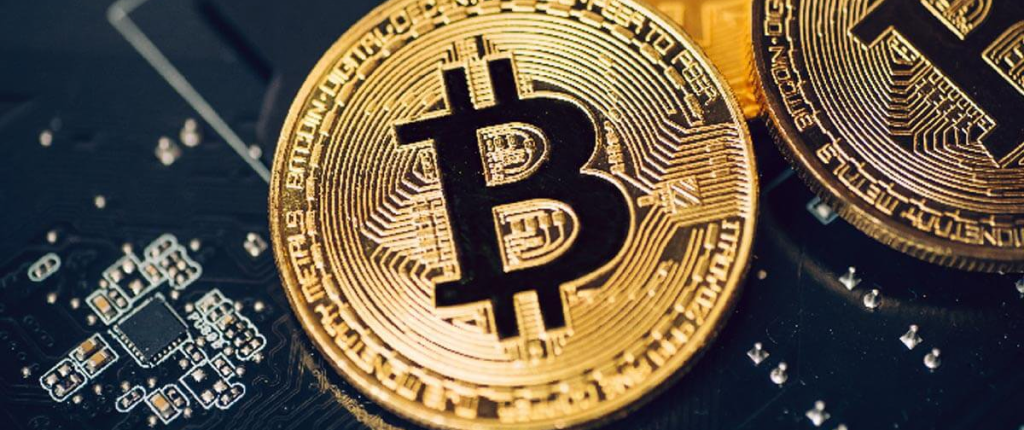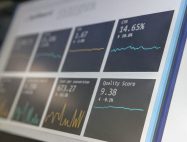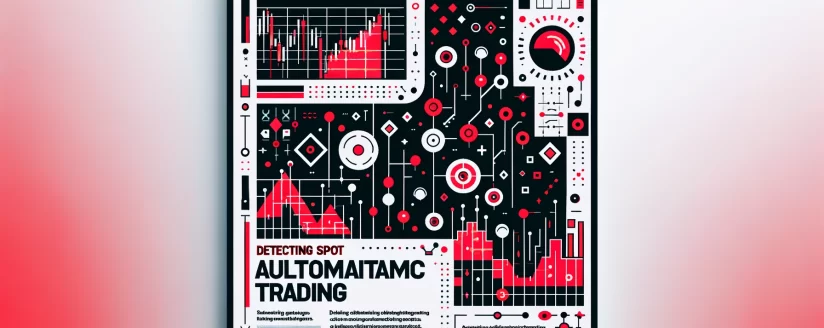Liquidity is one of the most important indicators investors and traders look at before making a decision to buy/sell an asset in the currency, stock, or cryptocurrency markets. Let’s examine what liquidity is, what indicators define and influence it, how Yield Farming works in decentralized finance, what smart contracts have to do with anything, and how liquid markets differ from illiquid ones. This is a deep dive into liquidity. Let’s begin!
What is market liquidity?
Liquidity provides you with the ability to quickly sell or buy a particular asset on the market without it losing its value. The faster an asset can be sold at its current market value, the higher is the liquidity.
High liquidity means that assets, such as fiat currencies in trading pairs, can maintain low volatility even in stressful situations. The foreign exchange market has more liquidity than most other markets. Daily trading volume in the foreign exchange market exceeds $7 trillion.
However, it is necessary to separate the concepts of market liquidity and individual trading pairs liquidity on the exchange, which can be low even for liquid assets. For highly liquid assets, for example, you can quickly exchange a large amount of USD for GBP without losing value. The transaction itself is almost instantaneous. It is the same for stocks.
An example of a less liquid market would be real estate. A transaction involving the purchase or sale of real estate can easily take a few weeks, as each of these assets must be valued, and the transaction is accompanied by a large number of documents that must also be reviewed and signed.
The liquidity of different trading pairs can vary greatly. Even liquidity of the same pair on different trading platforms is different. It depends on various factors: for example, the trading volume of the central exchange and on which liquidity providers the site uses.
Who supplies liquidity to financial markets?
In the stock and Forex markets, liquidity providers (LPs) are companies that provide firms with access to market makers: banks, mutual funds, institutional investors, some brokers, exchanges, and other financial organizations and retail investors that have been specially licensed to do so.
A liquidity provider is a bridge between a broker and what is known as an asset pool so that traders can exchange them in large quantities. The higher the liquidity in a given market, the faster traders can buy or sell assets and don’t lose orders, which is often the case in markets with low liquidity. We will explore what liquidity pools are in the following sections.
In this, traditional financial markets, such as the stock market and the foreign exchange market, differ significantly from the crypto market, where each user acts as a liquidity provider. In the foreign exchange market, for example, only accredited market makers can provide liquidity. Brokers sometimes can provide access to liquid markets, but they do not always act as liquidity providers.

What indicators does liquidity include?
To determine market liquidity, several indicators are used, such as exchange rate, trading volume, market depth, low spread, and order slippage. Market liquidity is determined by a combination of factors: for example, a trading pair may have a large trading volume but a small market depth, due to which the value of assets becomes highly volatile. Knowing these indicators, you can independently determine whether the market is liquid or not.
Speed of exchange
We have already mentioned that high liquidity is determined by the speed of transactions for buying and selling assets. At the same time, it is important to keep and mind that assets should not significantly lose their market price during the exchange.
The exchange rate determines how quickly an order to buy or sell a particular asset is executed. In the case of less liquid trading pairs, limit orders can be executed within minutes or hours. The longer the order execution time, the lower the liquidity.
Value
The difference between the highest bid price (bid) and the lowest ask price (ask) is called a spread. Highly liquid trading pairs are usually characterized by a low spread, which brokers use to cover trading fees.
The most liquid pair on the foreign exchange market is EUR/USD. The average spread between the buying and selling rates of the Euro/Dollar pair is about 1.5 basis points. For comparison, for the GPB/USD pair, the average spread is 1.7 basis points for the GPB/USD pair and 2.0 for the USD/CAD pair.
When liquidity is high, not only the spread decreases but also the volatility of the assets, as liquidity pools provide a sufficiently high supply volume to meet the high demand by traders. However, when the volatility of an asset increases, the spread between the buy and sell price usually increases as well.
Trading Volume
High liquidity is usually closely related to trading volume: the more active traders trade, the tighter the order book and the narrower the spread between the buying and selling prices.
Low volume usually correlates with insufficient market liquidity. Low-liquidity trading pairs cannot provide satisfying conditions for traders who want to exchange a large number of assets or currencies.
Market Depth
This indicator shows how much it is possible to expand the trading supply for assets or currencies without affecting their value. In the stock market, for example, this term is used for transactions to buy large blocks of shares in a company.
On the chart, it resembles a graph reflecting the totality and volume of buy and sell orders. At first glance, it is not always possible to estimate the size of liquidity pools, but it is the depth of the market that allows you to do so comprehensively.
Slippage of orders
If there is not enough liquidity, order slippage can occur when there is a large volume of transactions. This means that the exchange or broker has a low volume of trading quotes in the order book, so some buy and sell orders cannot be executed. For this reason, large traders prefer sites with high liquidity.
For example, liquidity mining uses slippage tolerance to limit losses when buying digital assets. When a low slippage value is set, if the transaction’s impact on the price exceeds this value, the order will not be executed if there is a large volume of buying or selling going on. In other words, the smart contract will not execute the trader’s order. High slippage is only used by farmers when trading new tokens due to their low DeFi liquidity.
Volatility
One of the most important signs of a liquid market is the stability of quotes, which change sharply only in rare cases, such as when there is a high activity of traders in the market. Forex is considered a liquid market because the price of major currency pairs hardly changes within a short period of time. For comparison, the price level of even the largest cryptocurrencies can plummet or rise by 10%-20% or even more within a few hours.
For example, in early December 2021, against the backdrop of a stock market slump related to investors’ expectations of an interest rate hike by the Fed and central banks of other countries, the price of the first cryptocurrency, Bitcoin, fell by almost 27% in just two days – from $58,000 to $42,300. This is despite the fact that Bitcoin, with a capitalization of more than $750 billion, is one of the ten largest assets in the world, according to data by Companies Market Cap.
Stability also applies to supply liquidity itself. For example, during periods of high trading activity, the order book may tighten, and the spread may fall, even though these indicators were previously at low levels. But when the situation stabilizes, these trading pairs become low-liquid again. So it is crucial for trading pairs to have consistently high liquidity.
Liquidity and capitalization
These indicators are closely related, but high capitalization of assets does not always mean high liquidity and vice versa. And the level of liquidity depends on individual providers, exchanges, and demand.
For example, Apple’s (AAPL) shares outperform Tesla’s (TSLA) in terms of capitalization. At the same time, however, Tesla often leads in trading volume and outperforms in liquidity. Low capitalization of trading assets usually translates into low liquidity. This is especially true for the cryptocurrency market: take a look at the liquidity of cryptocurrency trading pairs that are not among the top 100 by capitalization at Coin Market Cap.
Liquidity in the Forex market
The foreign exchange market today is the largest international market. It is even larger than the credit market in trading volume. Unlike the stock market, the foreign exchange market is decentralized and difficult to regulate.
In the foreign exchange market, licensed market makers such as banks, credit institutions, investment and hedge funds, and institutional investors provide liquidity. But foreign exchange brokers can’t work with them directly. Therefore, liquidity providers come into play. These are companies that connect brokers with liquidity pools.
The Service Finarm provides assistance in picking a reliable liquidity provider to grant traders the opportunity of comfortable trading in the foreign exchange, stock, and cryptocurrency markets.
The most liquid trading pairs in the Forex market are EUR/USD, USD/JPY, GBP/USD, AUD/USD, and USD/CAD. At the same time, the share of the U.S. dollar in the international market is more than 1.5 times higher than the share of the Euro.

Liquidity in the stock market
The stock market is centralized, unlike the markets for currencies and cryptocurrencies. This means that certain exchanges follow the instructions of local regulators such as the U.S. Securities and Exchange Commission (SEC), the Swiss Financial Market Supervisory Authority (FINMA), the U.K. Financial Conduct Authority (FCA), and the like. Each regulator sets its own rules and restrictions for trading on exchanges, which must also be followed by brokers that provide access to trading in securities and other exchange commodities.
Liquidity in the cryptocurrency market
Market makers provide liquidity for crypto exchanges as well. However, crypto exchanges are divided into two parts – centralized and decentralized. They differ in who can provide liquidity to crypto exchanges, how the mechanism for providing liquidity to traders is designed, and how users interact with liquidity pools.
What is a liquidity pool?
A liquidity pool is a type of storage where deposited assets are kept to provide sufficient liquidity to those wanting to exchange tokens or cryptocurrencies through decentralized crypto exchanges (it is called Yield Farming). Every liquidity pool offers only one trading pair, but DEX can easily have dozens or hundreds of such pools on a DEX.
In addition, a lot of AMM protocols offer holders the ability to create their own liquidity pools.
There are two types of liquidity pools in the cryptocurrency market: traditional, provided by centralized exchanges (CEXes), and decentralized, provided by the traders of decentralized exchanges (DEXes) themselves. Let us analyze this question in more detail. Let us start with CEXes.
Liquidity pools on centralized exchanges
“CEX” refers to any exchange that provides custody services for crypto assets, such as Binance, FTX, Bybit, and so on. The exchanges themselves provide a liquidity pool to users trading cryptocurrencies on the platform. Other crypto exchanges enlist external market makers for this purpose.
The way liquidity pools work in the crypto market is different from Forex: users trade on the exchange and actually have direct access to liquidity pools provided by market makers. However, the centralized exchange acts as a custodian, providing a platform for trading and services for storing digital assets.
Liquidity pools on decentralized exchanges
In the DeFi world, liquidity is organized in the same way as in traditional finance, but the difference is in who exactly provides the liquidity. The sphere of decentralized finance is unique in that blockchain platforms, unlike centralized exchanges, act only as intermediaries in the operations but not in the storage of digital assets.
In other words, users of automated market makers or DEXes trade directly with each other and use their own non-custodial wallets to store digital assets. All transactions are processed by a smart contract – an autonomous program that operates without the intervention of the company or developers. The moment the contract function is invoked, the user signs transactions to effect an exchange on the blockchain, which is called atomic swaps in the DeFi space. In this case, the user pays a network commission and trading fees. The former is paid to miners or blockchain validators, the latter to liquidity providers.
DeFi protocols not only provide decentralized solutions for exchanging cryptocurrencies and tokens but also allow users to add liquidity to trading pairs themselves, earning passive income from the trading fees traders pay when making transactions on the DEX. Let us take a closer look at how automated market makers based on smart contracts work.

How do DeFi liquidity pools work?
Users of the DeFi (decentralized finance) ecosystem provide liquidity by adding crypto assets to liquidity pools via smart contracts. This allows traders to conduct exchange transactions with token pairs as part of the liquidity provision process, where assets are pooled. In addition, the process is designed so that DeFi protocols ensure that the pool is linked to the current market price, allowing traders to exchange large amounts without price losses. In some ways, DeFi’s liquidity pool mechanism is similar to an OTC market, where investors can buy and sell large amounts of assets off the trading floor without affecting the exchange value. This approach is referred to as automated market making.
To understand how the DeFi liquidity pool actually works, let us take a look at the process using the Uniswap automated market maker. To become a liquidity provider, token holders must deposit two tokens into a special pool by paying a transaction fee, and a smart contract blocks assets so traders can perform token exchanges. In return, they receive liquidity pool tokens.
By blocking liquidity in the Uniswap pool, users receive passive income from merchant token exchange fees. Only token exchange payments (protocol fees) are taken into account and not transaction fees received by miners or validators depending on the type of blockchain network: for example, the Ethereum platform runs on Proof-of-Work (PoW), while BNB Chain, Cardano, and Solana are based on Proof-of-Stake (PoS). All transactions on the DEX are backed by smart contracts that ensure parties meet their trading conditions.
This is liquidity mining and is a part of Yield Farming Tools. At the same time, users bear the risk of impermanent loss caused by the high volatility of crypto assets. The greater the volatility, the greater the losses can be.
However, some exchanges have gone further and allowed not only receiving revenue from liquidity mining but also farming native tokens from decentralized exchanges. For example, at the PancakeSwap automated market maker, liquidity providers can stake the received LP-tokens and additionally receive CAKE – a native utility and governance token – as a reward. This encourages investors to hold CAKE tokens and other assets, providing liquidity.
What are the risks of liquidity mining?
One of the key risks of using decentralized financial products for holders is impermanent loss. Due to high liquidity, the price of one or two tokens from a pair may fall in equal value against fiat currency. In this case, liquidity providers suffer impermanent losses.
Another risk is related to possible errors in the smart contract code: hackers can break the blockchain protocol and withdraw all assets from one or more pools. There are also fraudulent DeFi projects under which attackers disguise financial pyramids or phishing protocols. When interacting with vulnerable contracts, you risk losing your digital assets.
Note: pay close attention to the transactions you sign in your wallet. The fact is that some smart contracts can request permission not only to view balances and sign transactions to add assets to liquidity pools but also to withdraw assets from the wallet without user confirmation!
In any case, even if they try to convince you of the reliability of any DeFi protocol, always follow one of the main rules of investing – do your own research (DYOR). New users often disregard this rule, chasing extra yields and often losing money.

How to choose liquidity providers?
Brokerage companies and crypto exchanges need to choose reliable and trusted providers in order to provide traders with sufficient liquidity pools. It is quite difficult to choose a supplier (LP) on your own. In addition, you will need to evaluate it and determine how reliable it is. If you choose the wrong provider that is unable to provide sufficient liquidity, your broker’s clients may suffer and are likely to prefer more reliable service.
To avoid this, use the services that will help you find the right liquidity provider. One of these services is Finarm. This is a liquidity provider aggregator with which you can find verified L.P.s for your business, such as brokerage. Liquidity providers can be filtered by category and country. If you have questions, Finarm is ready to provide you with advice and help you choose the right liquidity provider.










